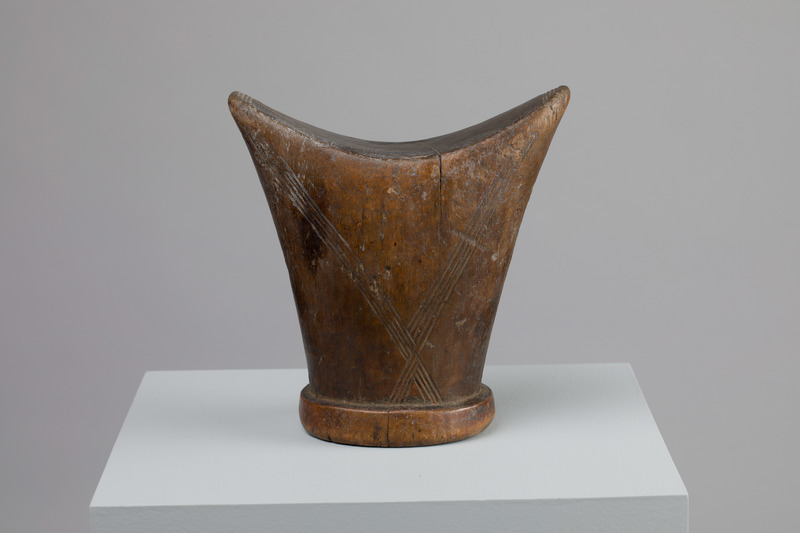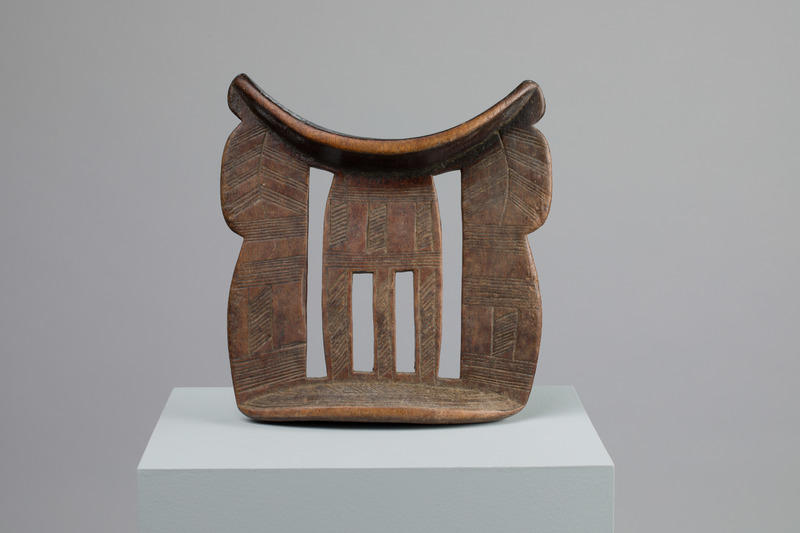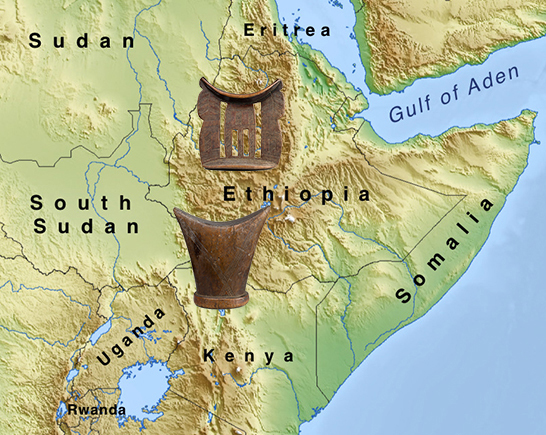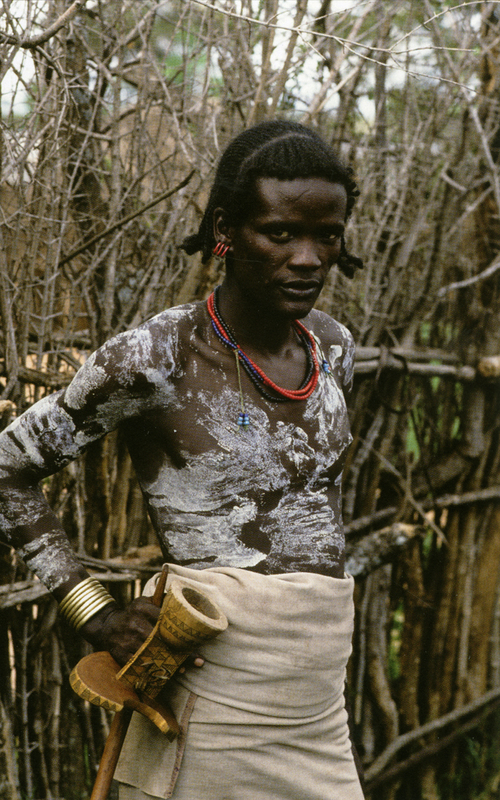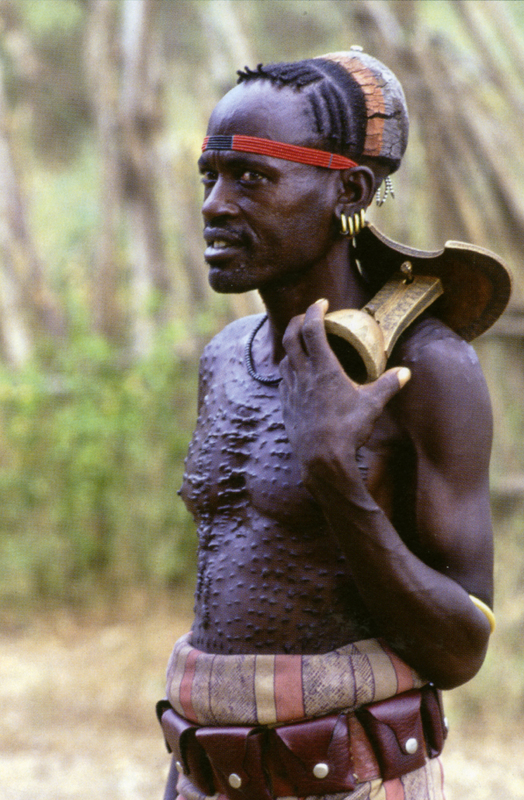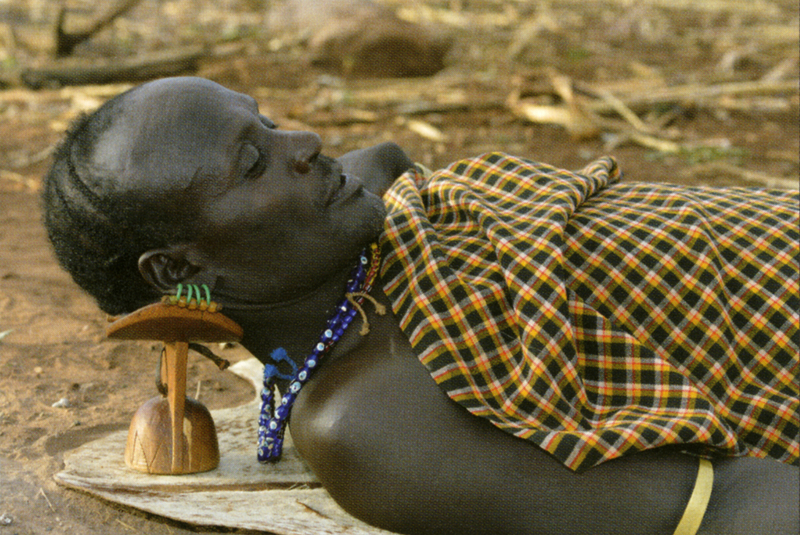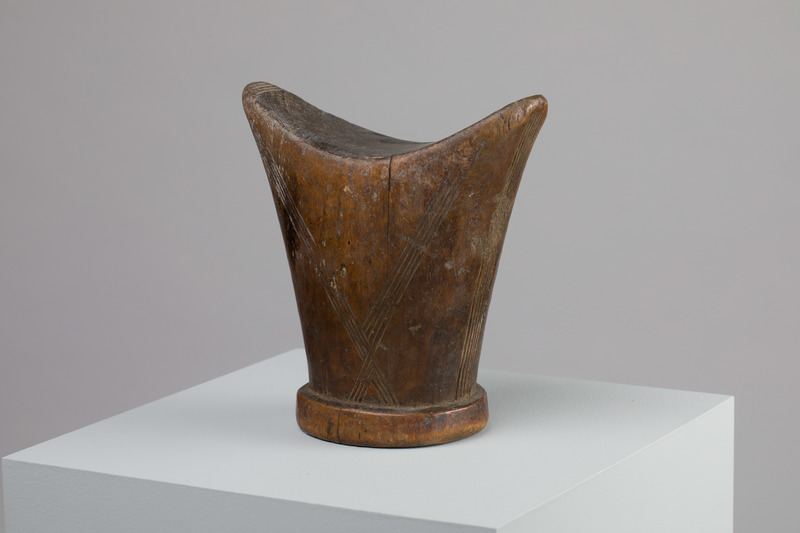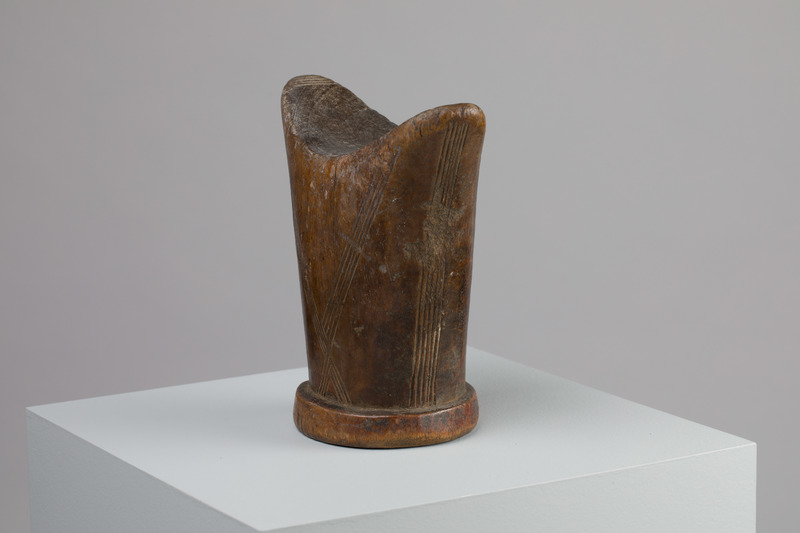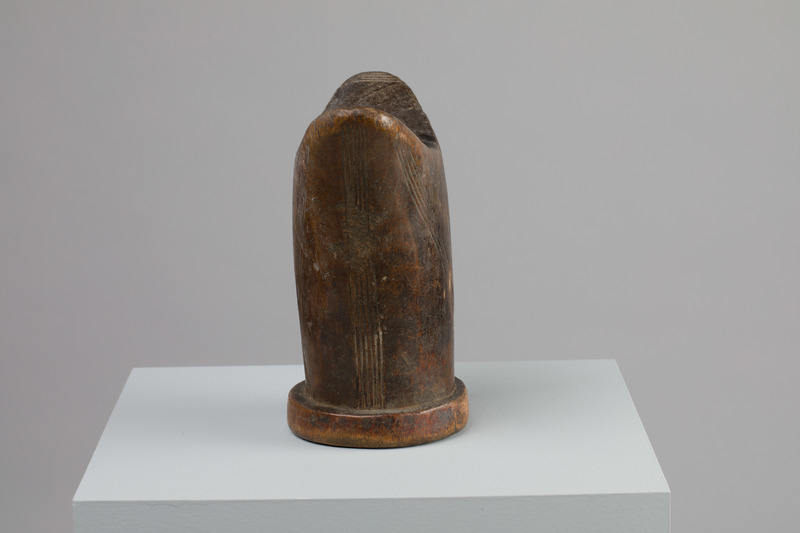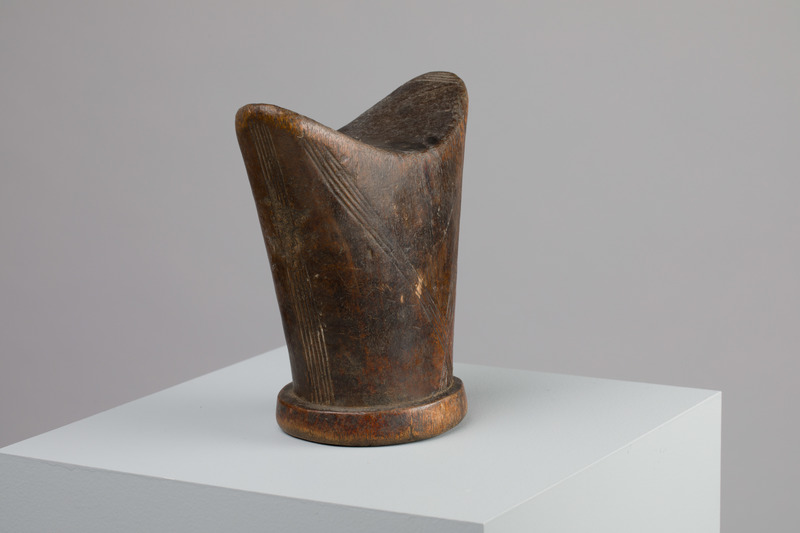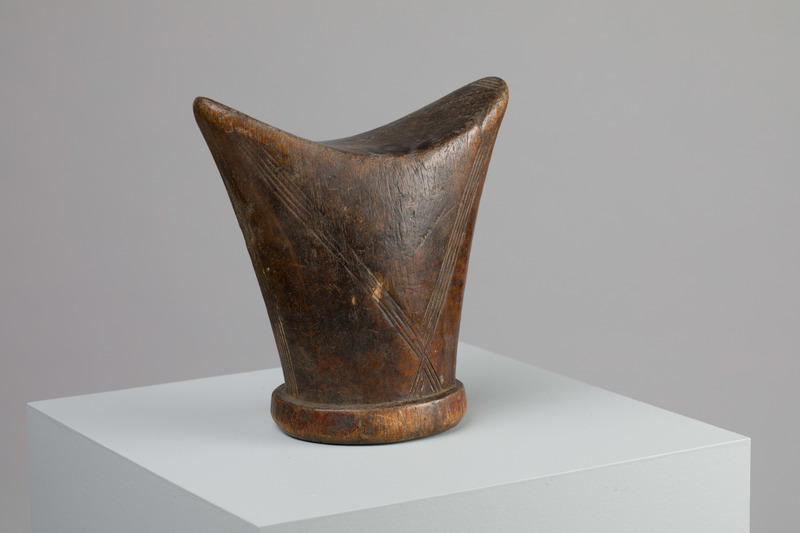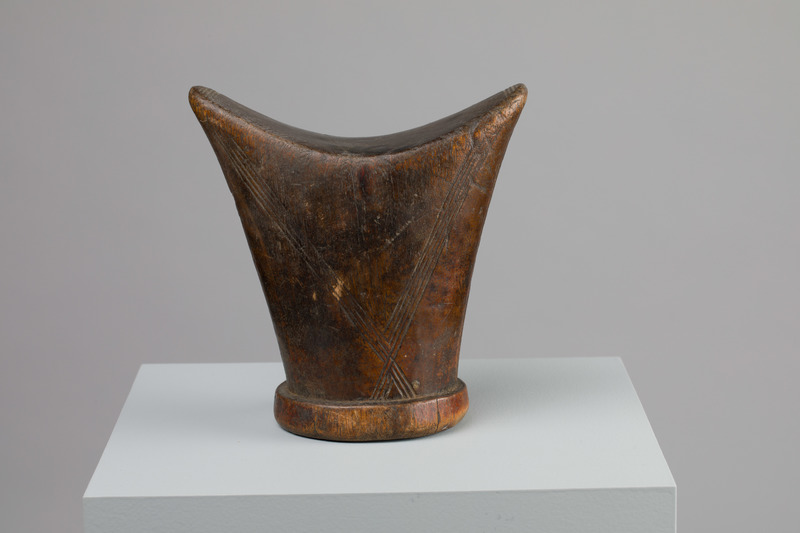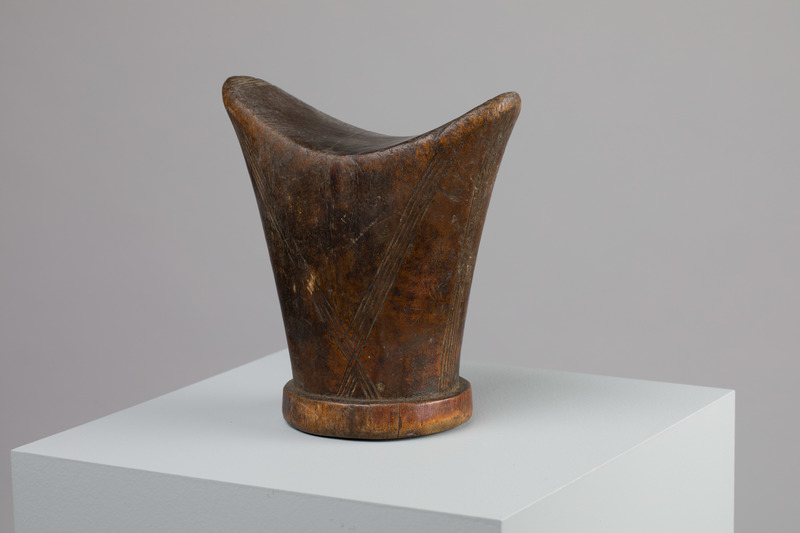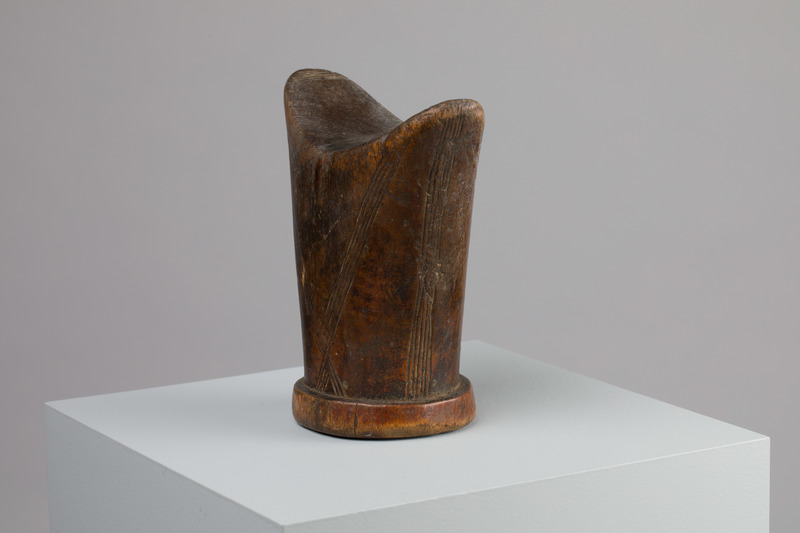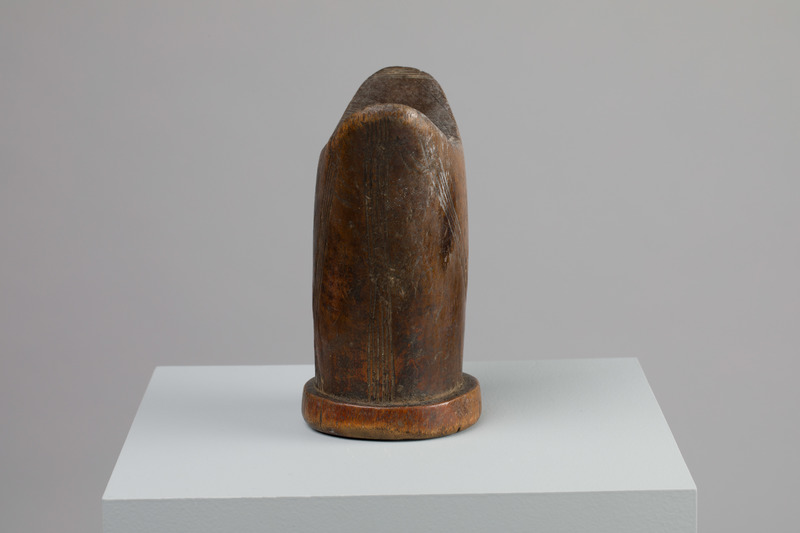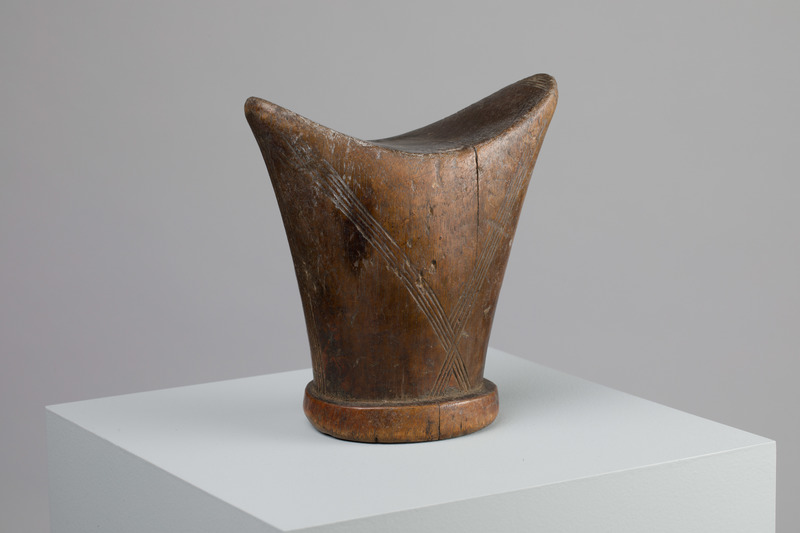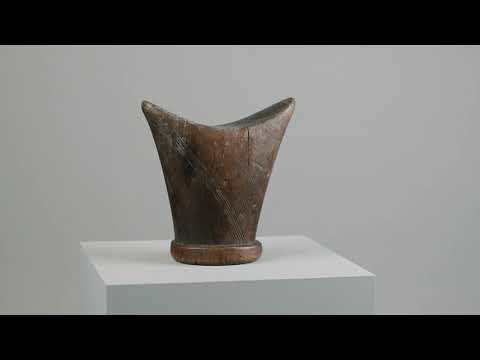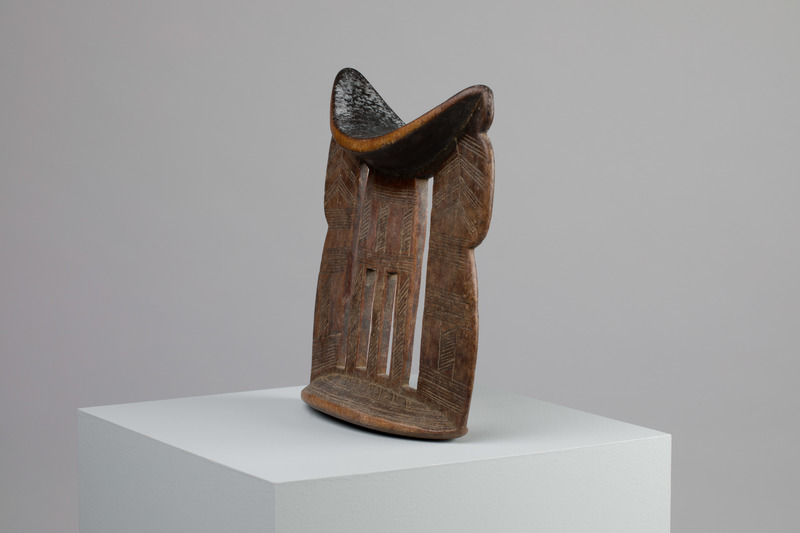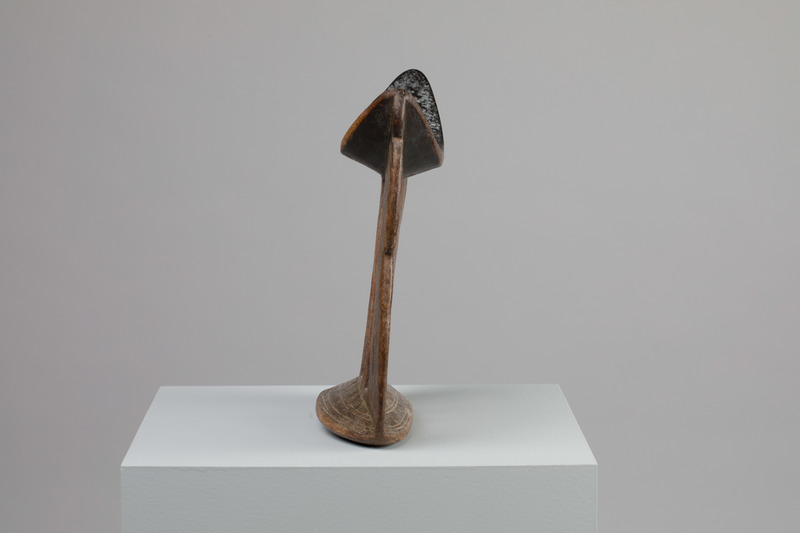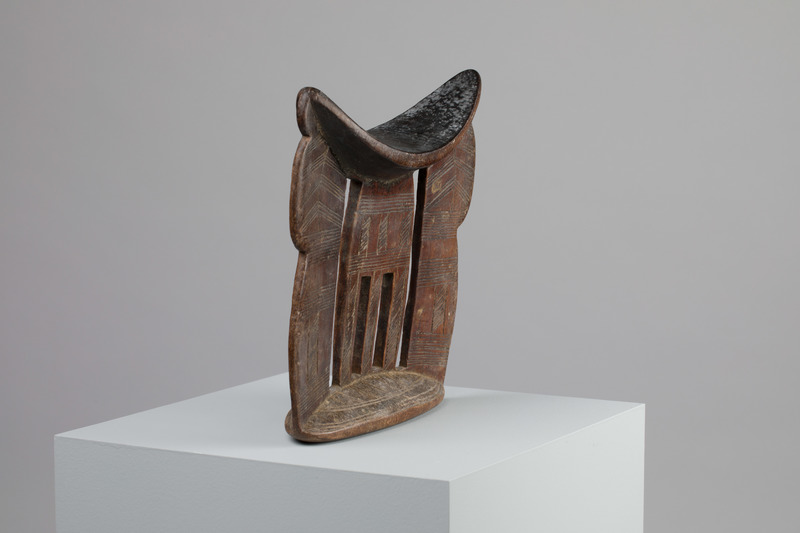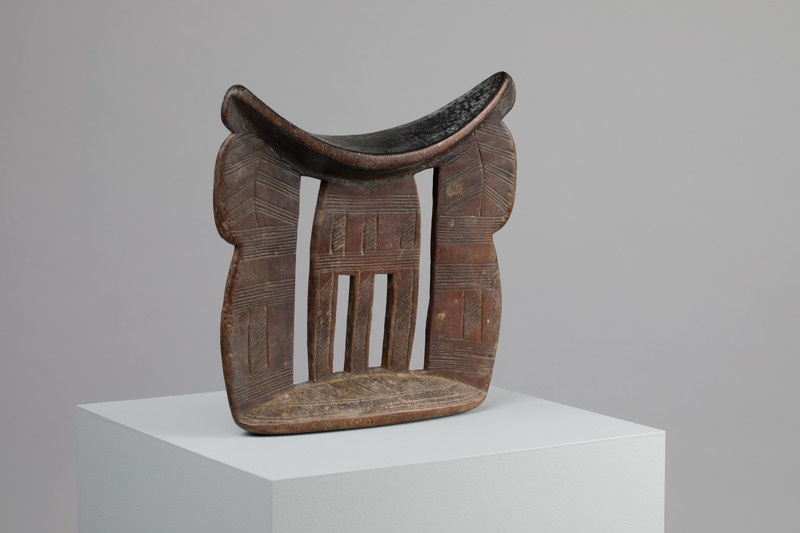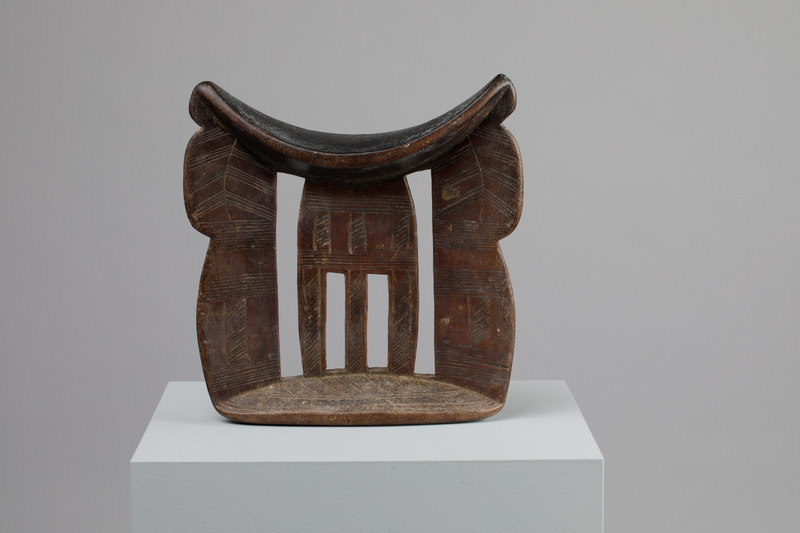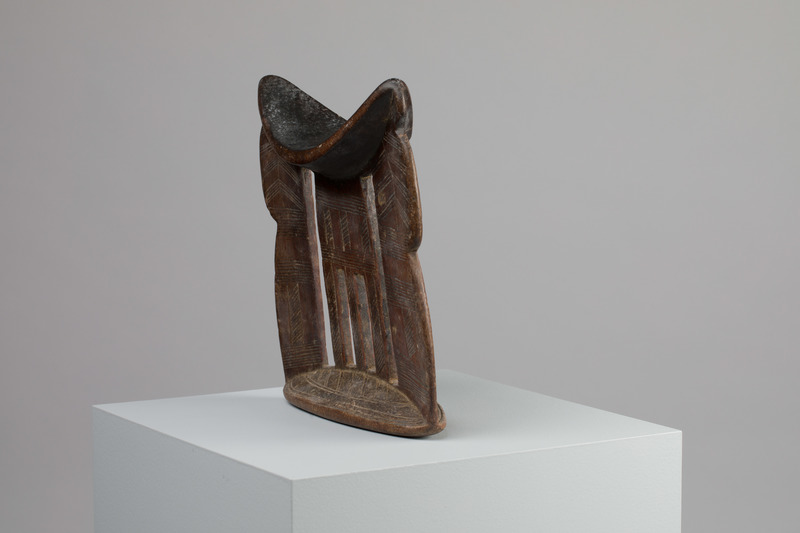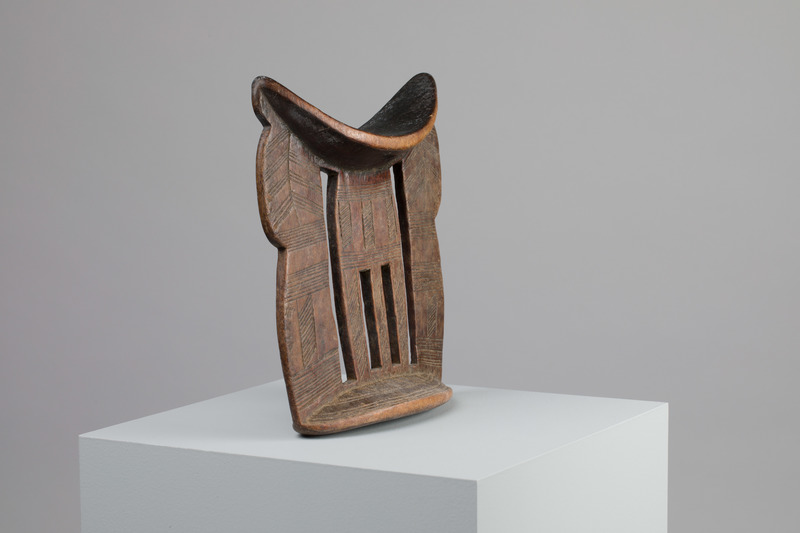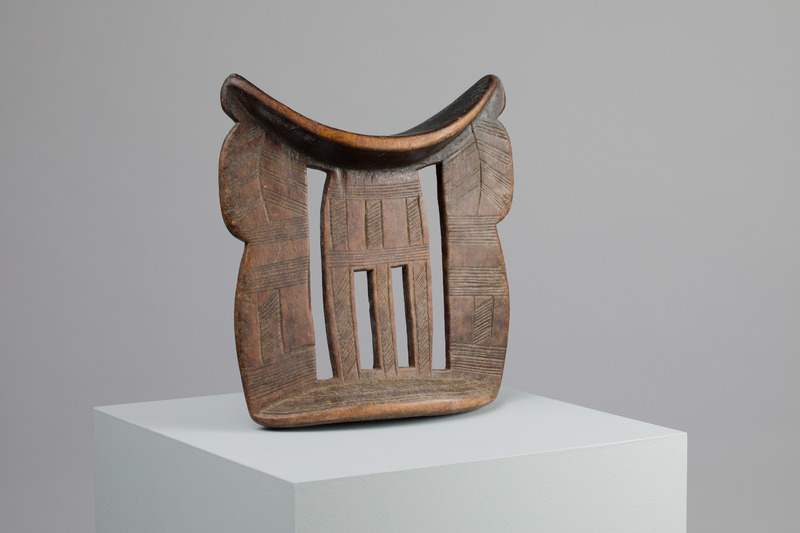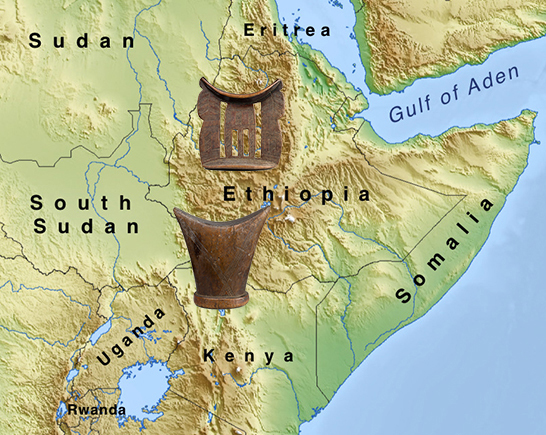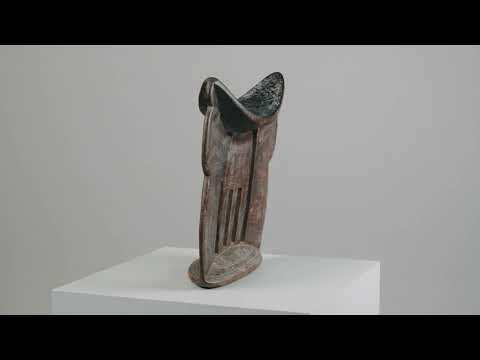Catalogue 60
Headrest, gimma or gyimme
Gurage people, Ethiopia
20th century
Wood; 7 1/2 x 6 3/8 x 3 7/16 inches (19.1 x 16.2 x 8.7 cm)
Palmer Museum of Art
Gift of Allen and Barbara Davis in memory of Margaret F. Plass
2016.174
Headrest, burkano
Kambaata or Hadiya people, Ethiopia
20th century
Wood; 8 x 7 5/8 x 2 5/16 inches (20.3 x 19.4 x 5.9 cm)
Palmer Museum of Art
Gift of Allen and Barbara Davis in memory of Margaret F. Plass
2016.177
Ethiopia has an incredible number of peoples who make and still use headrests in a wide variety of styles, all of them using geometric rather than any figurative elements. Ethiopian arts are not well studied, but fortunately a number of new studies are now being done. Several recent studies of headrest styles are helping us understand the distribution of styles, but unfortunately there is still not a lot of information about their usage and meaning. We now know that these two types of headrests are from the south-central part of Ethiopia just south of the capital, Addis Abba. One is used by the Gurage (sometimes known as the Gurage Sebatbet) peoples (although made by the Fuga), and the headrests are known as gimma. The other is used by Kambata and Hadiya peoples, who call their headrests burkano (Audouin 2016).
Hadiya and Kambata headrests were earlier identified by me and others as being from the Sidama area (Dewey 1993, 39). Two early sources explaining their use said Sidamo women wear intricate hair styles “which require the use of a headrest when sleeping” (Cerulli 1956, 127, citing Simoni 1940, 128–32), while men normally shave their head (implying men do not use headrests). They unfortunately gave no other details of style or usage, so the Sidama attribution was regarded as very tentative. The Hadiya and Kambata peoples are neighbors of the Sidama (Audouin 2016, 20–21), so it is a question whether they all use similar headrests. It is also unknown if these headrests are only for use by women, as the early research would suggest.
In the southern part of Ethiopia around the Omo River, most headrests are used by men, who carry them while herding. They are a symbol of their being initiated into adult and warrior status (Abbink 2015). To the north (south of Addis Ababa), where these two headrests are from, the headrests are apparently used by both men and women (sedentary farmers), with different styles used by the different genders. The blocky and at times rectangular headrests of the Gurage are made by an artisan class of woodcarvers known as the Fuga. “Among the most interesting items [they make] are the gyimme, headrests. There are different kinds for men and women, though it seems that they are mainly made as presents for brides” (Pankhurst and Nuda 1999, 125). Whether this style of headrest is used by men or women is unknown.
WJD
References
Abbink, Jon. 2015. “Extensions of the Self: Artistry and Identity in the Headrests and Stools of Southwest Ethiopian Peoples.” African Arts 48 (4): 46–59.
Audouin, Odilon. 2016. Headrests from the Horn of Africa. Paris: Toguna.
Cerulli, Ernesta. 1956. Peoples of South-West Ethiopia and Its Borderland. London: International African Institute.
Dewey, William Joseph. 1993. Sleeping Beauties: The Jerome L. Joss Collection of African Headrests at UCLA. Los Angeles: Fowler Museum of Cultural History, University of California, Los Angeles.
Pankhurst, Alula, and Worku Nida. 1999.“Menjiye Tabeta—Artist and Actor: The Life and Work of a Fuga Woodworker.” In Ethiopia: Traditions of Creativity, edited by Raymond Silverman, 112–31. East Lansing and Seattle: Michigan State University Museum in association with the University of Washington Press.
Simoni, A. 1940. I Sidamo, fedeli sudditi dell’Impero. Bologna: Augusto Cacciari.

